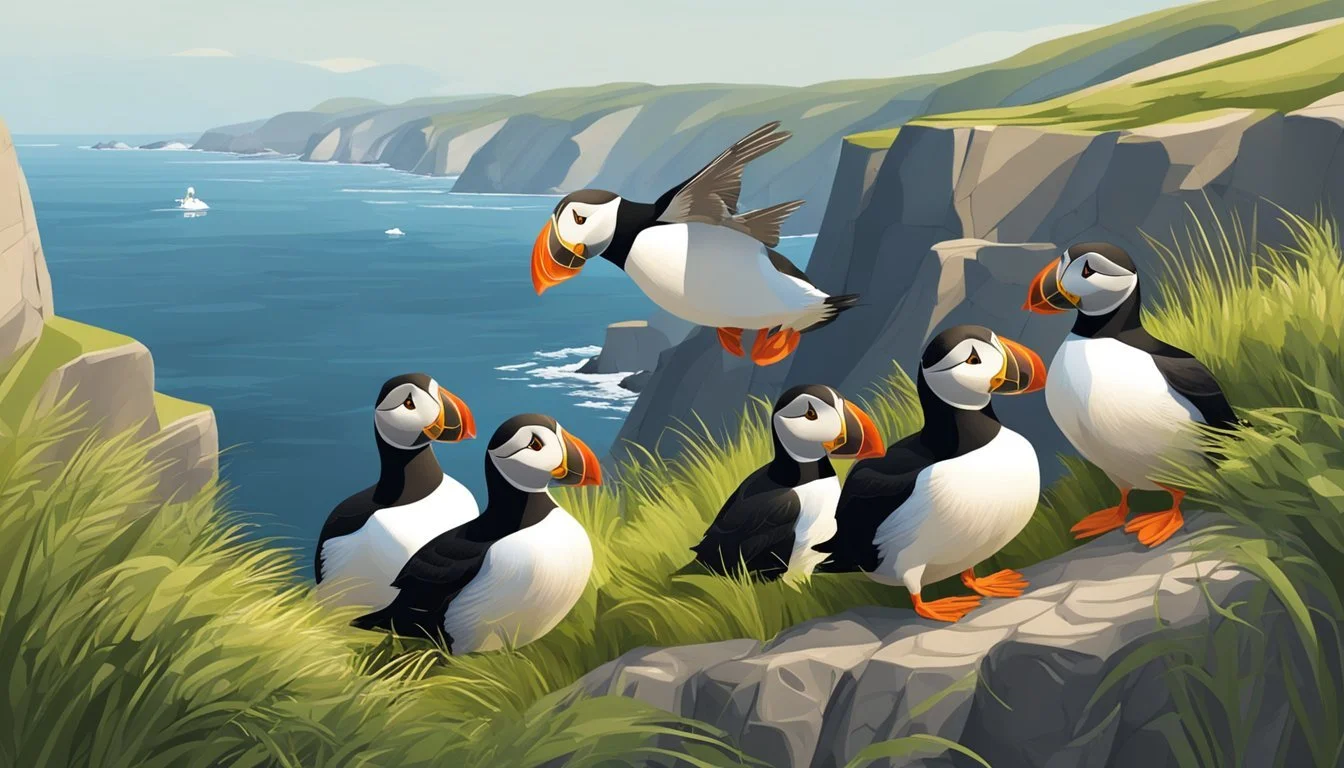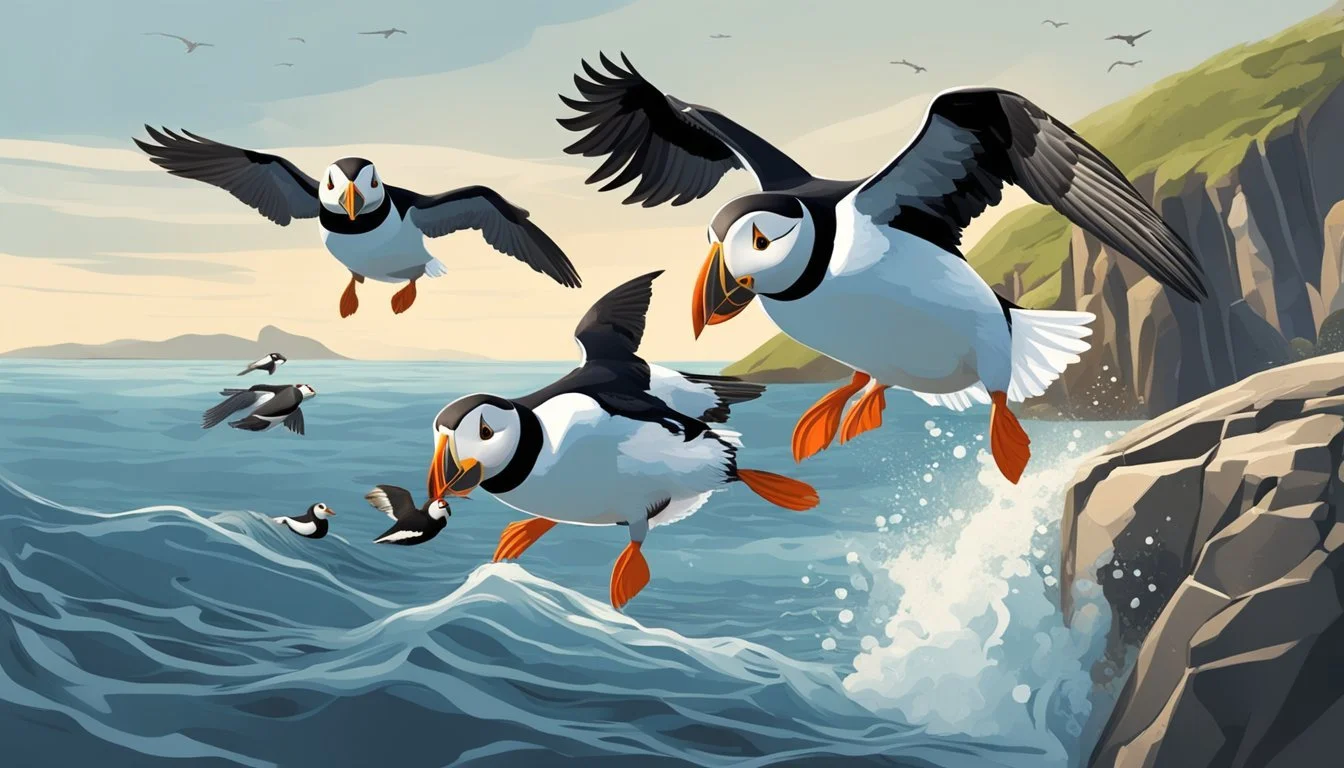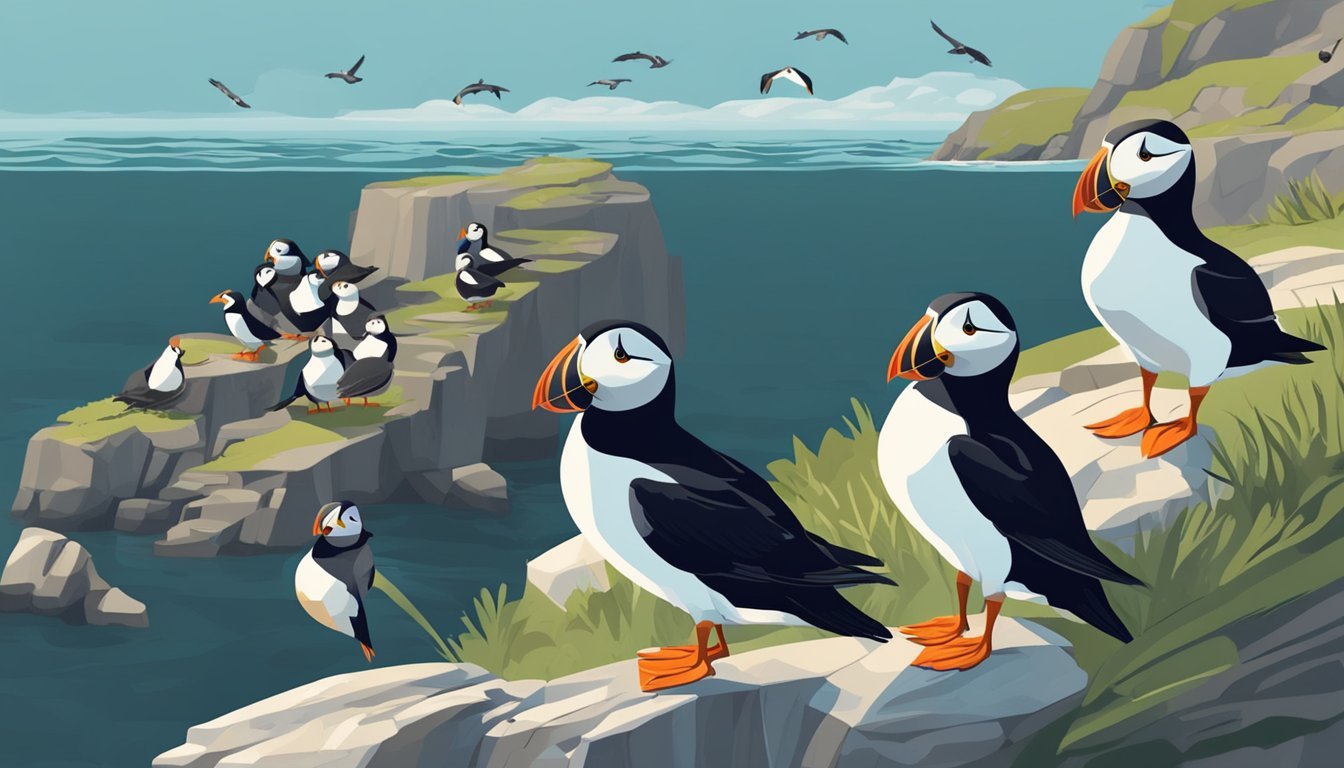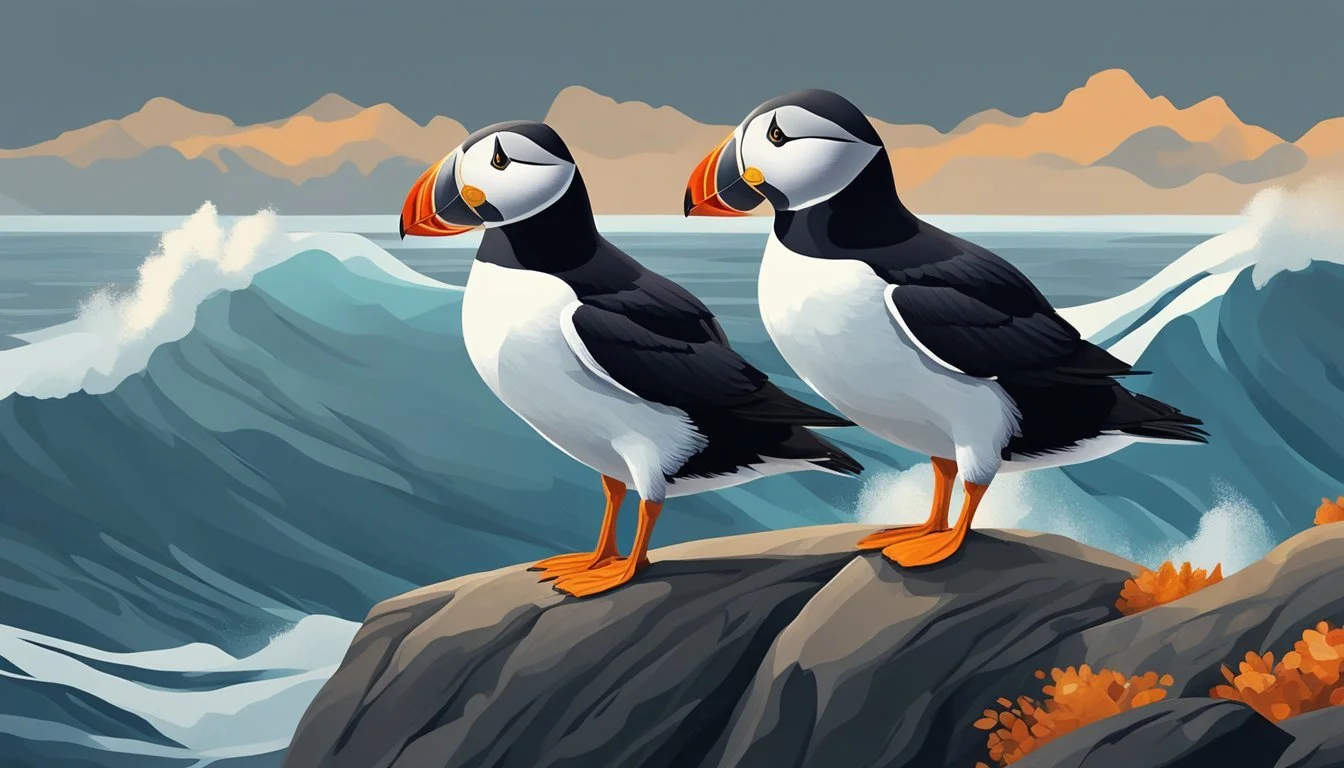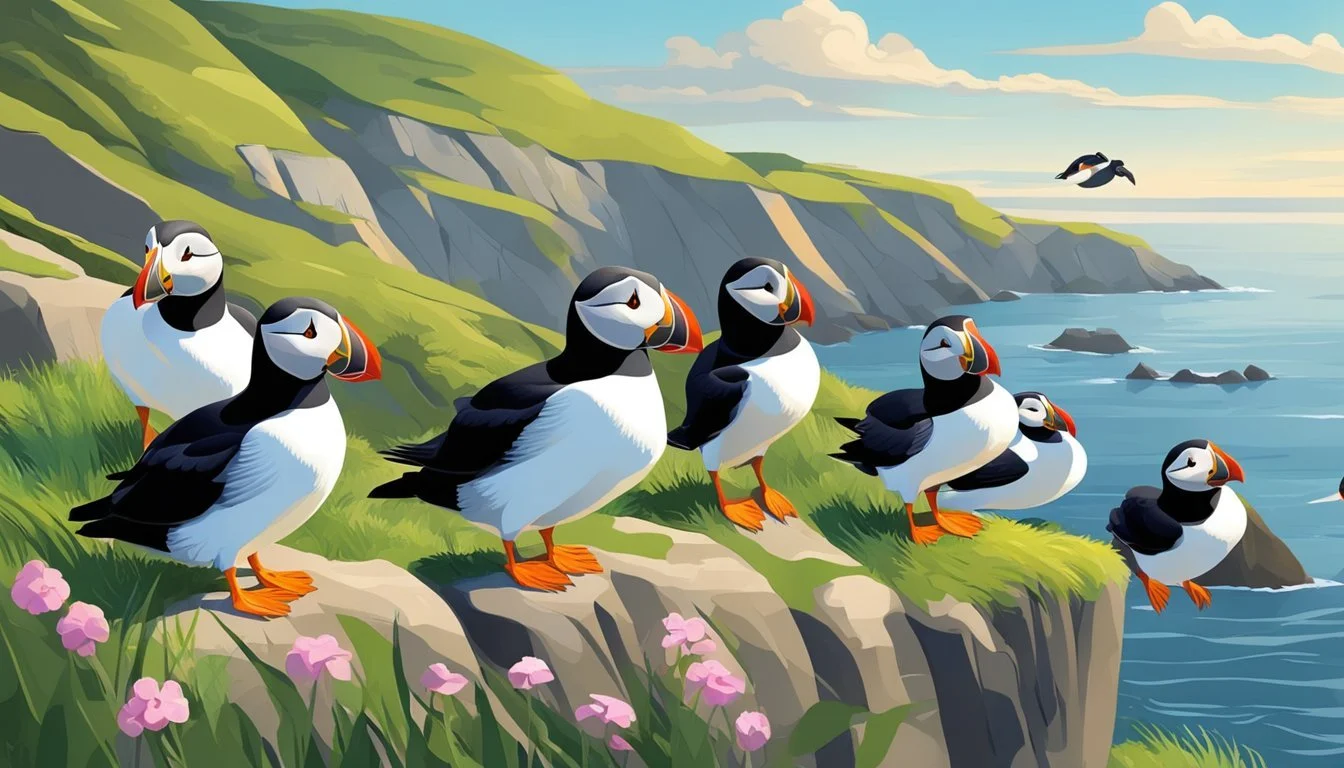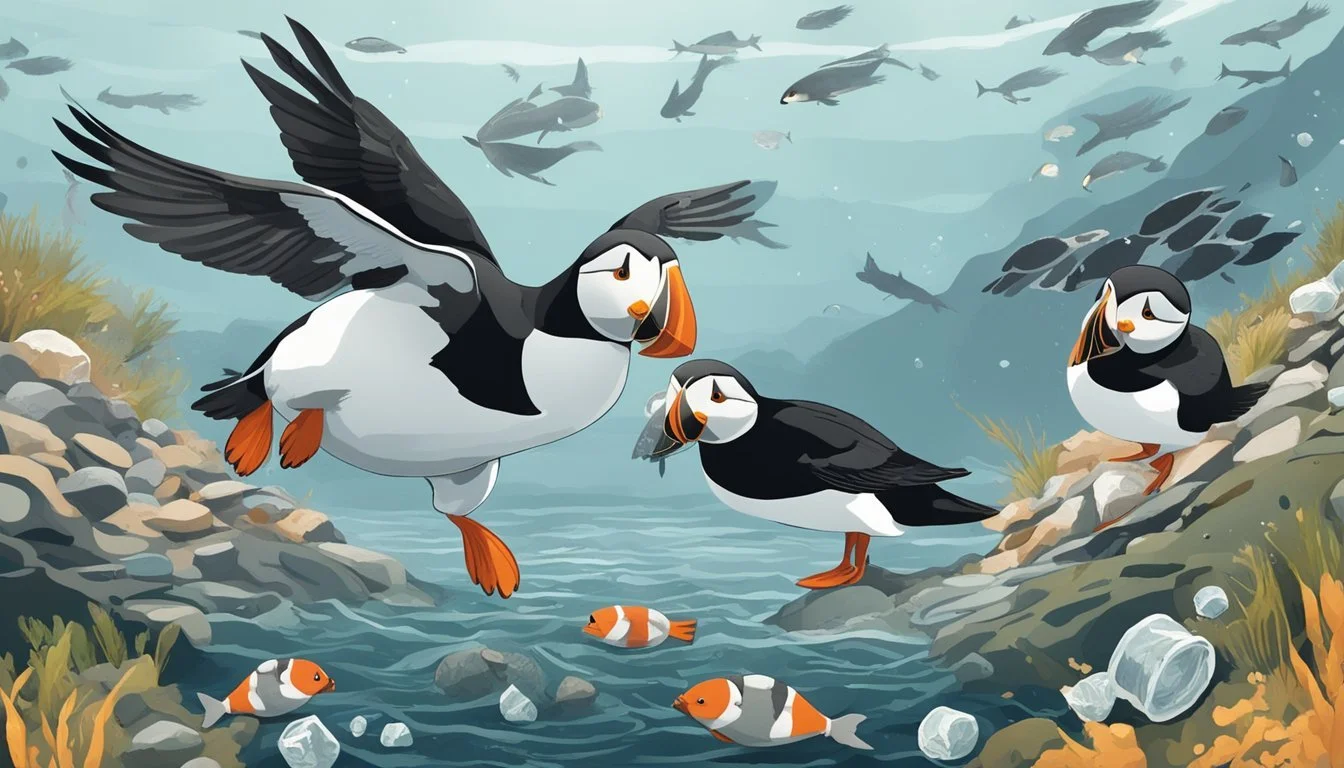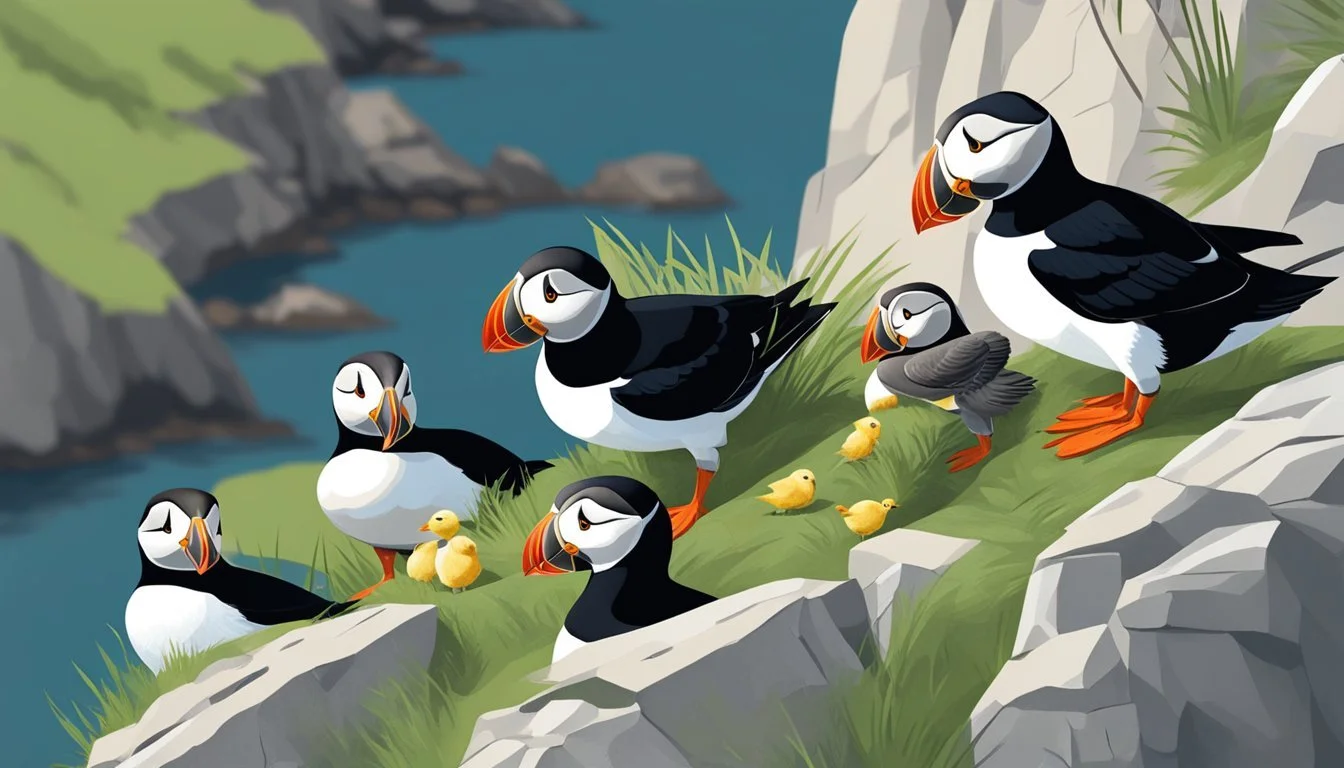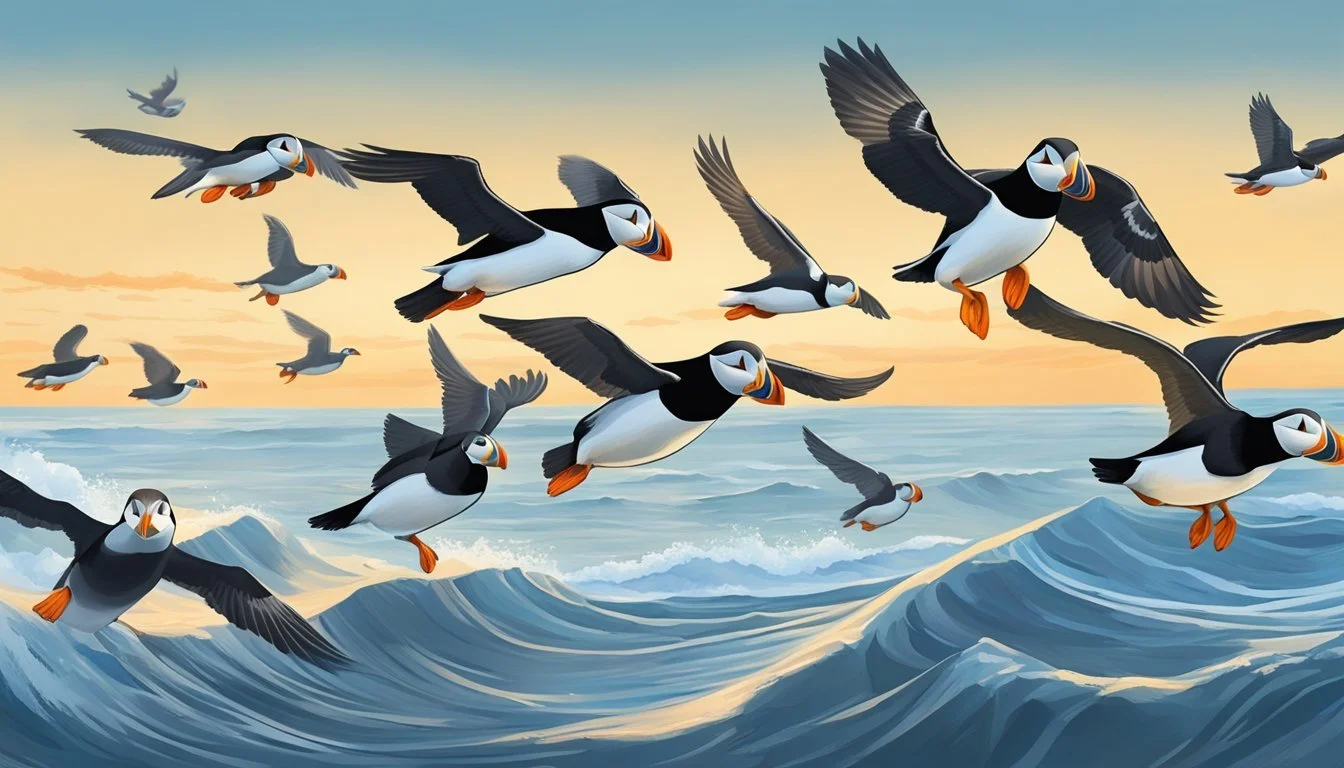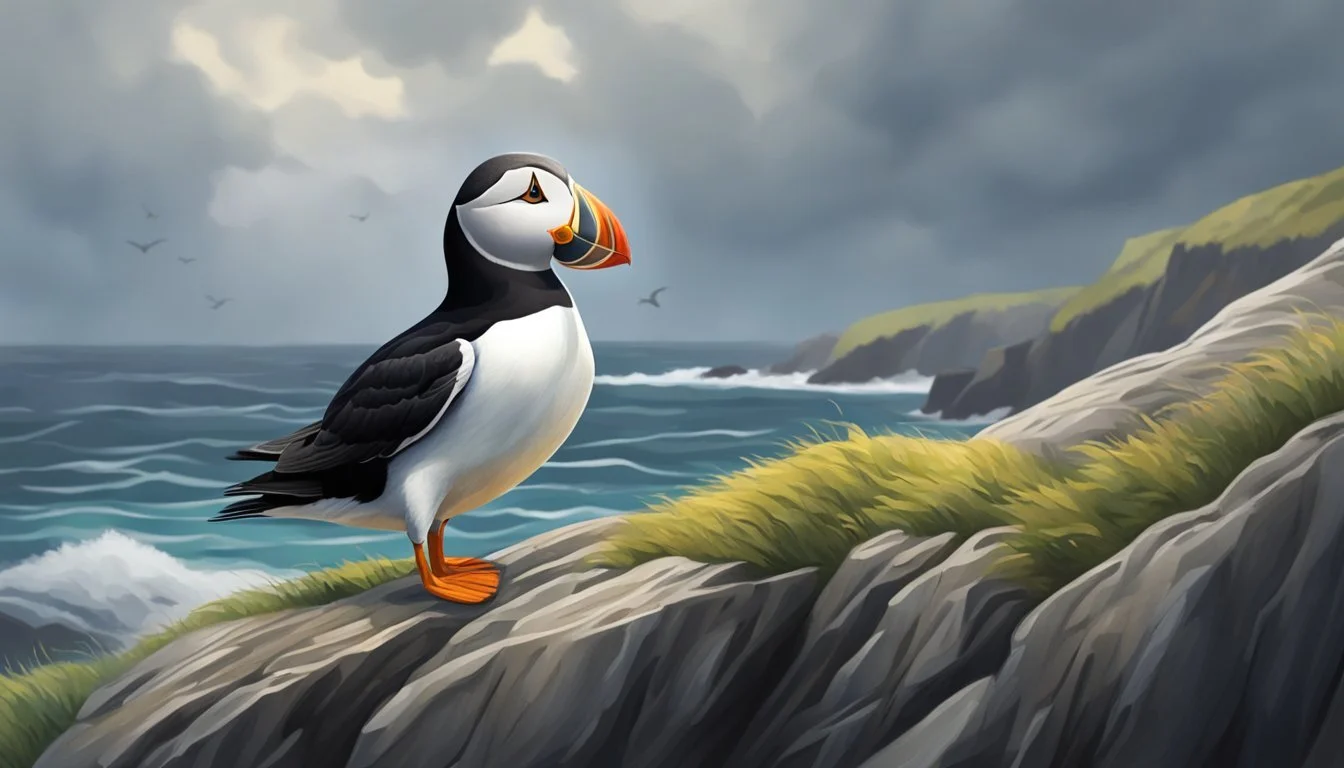How Long Do Puffins Last
Lifespan Insights of These Seabirds
Atlantic Puffins, with their distinctive and brightly colored bills, are a species of seabird scientifically known as Fratercula arctica. They are members of the Alcidae, or auk family, and are native to the North Atlantic region. These seabirds are often recognized for their unique appearance, sometimes earning the nickname "clowns of the sea" due to their striking facial markings and their clumsy demeanor on land.
Their lifespan in the wild can vary, but puffins typically live for about 20 years. The longevity of these birds is influenced by numerous factors, including availability of prey, predation pressures, and environmental conditions. Atlantic Puffins spend most of their life at sea, only coming ashore during the breeding season to form colonies on coastal cliffs and offshore islands. Here, in burrows dug with their sharp claws and beaks, they lay a single egg and raise their chick, known as a puffling.
Atlantic Puffins have a robust life cycle that reflects their adaptability to the marine environment of the North Atlantic, showing a remarkable ability to thrive in the open ocean as well as to navigate and forage during their extensive migrations. The resilience of puffins and their long-term pair bonding, with some pairs staying together for two decades, underscore the importance of stable and secure habitats for the continuation of their species.
Puffin Biology and Physical Characteristics
Puffins are distinct seabirds recognized for their unique bills and striking black and white plumage. The species exhibits several specialized adaptations that suit their aquatic lifestyle.
Anatomy of the Puffin
Puffins are members of the Alcidae family, characterized by their stout bodies and short, thick necks. An adult Atlantic Puffin typically measures about 25 to 30 cm in length, with a wingspan of approximately 47 to 63 cm. These birds are notable for their large bills, which are colorful with a mix of orange, grey, and yellow hues. During the breeding season, the bill brightens further, becoming more vibrant. Their orange-red feet are webbed, aiding in swimming, while their legs are set far back on the body, allowing for a powerful push when taking off from the water surface.
Bill color: Bright (orange, grey, yellow)
Size: 25-30 cm (length), 47-63 cm (wingspan)
Feet: Webbed, orange-red
The puffin's wings are small, which makes flight laborious with rapid flapping, but these wings transform into efficient flippers underwater. They beat their wings up to 400 times per minute to stay aloft. Puffins typically dive to depths of 60 meters for food, although they can go deeper if necessary.
Puffin Feathers and Plumage
The feathers of puffins play an essential role in waterproofing and insulation, vital for a bird that spends considerable time in the ocean. Puffins exhibit a characteristic black and white appearance. Their plumage during the breeding season is primarily black on the back and white on the underside, which helps them in thermal regulation and in predator avoidance through countershading.
Back plumage: Black
Underbelly plumage: White
Molting occurs once a year for the Atlantic Puffin, after which the bird's feathers are renewed and the bright colors of the beak fade, becoming duller during the winter. This seasonal dimorphism is one of the puffin's unique biological characteristics. The precision and consistency in their appearance throughout the species play a functional role in their social interactions and mating rituals.
Habitat and Distribution
Puffins are resilient seabirds that favor colder marine environments, with a distribution primarily concentrated in the northern hemispheres of the Atlantic and Pacific Oceans.
Puffin Regions in the North Atlantic
The Atlantic Puffins are commonly found throughout the North Atlantic Ocean. Notably, their presence is significant in Iceland, which hosts the largest population of Atlantic Puffins. The birds are also prevalent along coasts and islands of Europe, including the United Kingdom, Norway, and France. Other critical habitats span across the Faroe Islands, Greenland, Newfoundland, and Labrador in Canada. These regions provide the cold and nutrient-rich waters that are ideal for puffins.
Breeding Colonies and Their Locations
During the breeding season, Atlantic Puffins form large colonies on coastal cliffs and offshore islands. Primary breeding sites in Europe are located in Iceland, which is regarded as the puffin capital with millions of birds, and across the UK, particularly in Scotland and Wales. The birds nest as well in parts of Norway and some regions of France. Across the western side of the Atlantic, significant breeding colonies are found in Maine, United States, and the coasts of Eastern Canada, specifically in the provinces of Newfoundland and Labrador. These areas provide the safe and secluded nesting sites that are essential for raising their young.
Feeding Habits
The Puffin's diet centers around a variety of small fish, and their successful hunting techniques are critical to their survival.
Puffin Diet
The primary diet of puffins consists predominantly of small fish. They are known to eat herring, sand eels, hake, and capelin. These fish are crucial to providing the energy puffins need for their daily activities and nurturing their young.
Hunting Techniques and Prey
Puffins exhibit expert diving skills when hunting for prey. They can dive to depths of 60 meters (200 ft) while using their wings to 'fly' underwater. They typically catch several small fish in one dive, holding them in their beak crosswise.
Reproductive Behavior and Lifecycle
Atlantic puffin pairs typically form long-term monogamous relationships. The breeding season is a critical part of their lifecycle, involving intricate behaviors for nesting and raising their young.
Mating and Breeding Season
The breeding season for Atlantic puffins takes place from late spring to early summer. Adult puffins usually return to the same nesting sites each year. Males and females engage in courtship behaviors such as billing, where they rub their beaks together. This reaffirms their pair bonds and signals readiness to breed.
Breeding Location: North Atlantic colonies from Northern New England to Greenland, and from the United Kingdom to Russia.
Breeding Onset: Typically April to August, varying slightly by geographic location.
Nesting and Raising Young
Puffins have a distinct way of creating a nest; they usually dig a burrow on a seaward cliff or use crevices between rocks. A female puffin lays a single egg per breeding season and both parents share incubation duties for around 42 days.
Nest Characteristic: Tunnels can be up to 2 meters (6.6 feet) long leading to a nesting chamber.
Egg Incubation: Approximately 39 to 43 days, by both parents.
Puffling Care: After the puffling hatches, parents take turns foraging for fish and feeding the chick for about 6 weeks until it is ready to fledge.
Parents provide a high level of care to their puffling, ensuring it is well-fed predominantly with small fish. The young puffin, known as a puffling, remains in the burrow until it can fend for itself. Once fledged, the puffling will not return to land for several years until it is ready to breed.
Conservation and Threats
Puffins face numerous challenges that threaten their survival, from environmental pressures to human impacts. Effective conservation efforts are critical to prevent further declines in puffin populations.
Environmental Concerns
Climate Change: Puffins are impacted by changes in sea temperature and weather patterns, which can affect the availability of their prey. This has consequent effects on breeding success and chick survival. Pollution: Oil spills and plastic debris are significant pollutants affecting puffins, leading to habitat degradation and mortality. Puffins can ingest or become entangled in plastic, which can be fatal. Overfishing: A decrease in fish stocks due to overfishing threatens the puffins' food supply, altering their diet and potentially reducing breeding success. Predators: The introduction of non-native predators to puffin nesting areas can result in increased predation rates. Gulls, in particular, are known to prey on puffin eggs and chicks.
Conservation Efforts
Protected Areas: The establishment of marine protected areas and seabird sanctuaries provides safe habitats for puffins to feed and breed. Policy and Legislation: Regulations to control overfishing and pollution help ensure sustainable environments for puffin populations. Research and Monitoring: Continuous research is necessary for understanding puffin ecology, and monitoring provides data to track population changes and inform conservation strategies. Public Awareness: Raising awareness about puffin conservation encourages responsible eco-tourism and community involvement in protecting these birds.
Puffin Lifespan and Health
The typical lifespan of puffins and the health factors affecting their longevity are crucial in understanding these seabirds' lives.
Typical Lifespan
Puffins are known to live, on average, up to 20 years. However, their lifespan can vary based on several environmental and health-related factors. Monitoring these birds over time has provided a clearer picture of their longevity in the wild.
Health Factors Affecting Longevity
Several key health factors contribute to the longevity of puffins:
Quality of Diet: Puffins primarily feed on fish. Availability and access to nutrition-rich prey are essential for their overall health.
Predation Risks: Puffins face threats from sea and land predators, which can impact their survival rates.
Breeding Stress: The reproductive phase, including egg laying and chick rearing, can affect their health and lifespan.
Environmental Conditions: Harsh weather and changing sea conditions can influence puffin health and mortality.
Cultural Significance
Puffins hold a unique place in various cultures, often represented with affectionate nicknames that reflect their endearing qualities and appearance.
Puffins in Popular Culture
Puffins frequently appear in media and literature, where they are affectionately referred to as "Clowns of the Sea" due to their colorful beaks and awkward land movements. These seabirds, with their distinctive charisma, have featured in films, books, and even as mascots, which exemplifies their popularity and symbolic presence. Their portrayal often emphasizes the idea of community, as puffins are known for their social breeding colonies.
Puffins and Their Symbolism
In symbolism, puffins resonate with various meanings. They are called "Friar" of birds, a nod to their black and white plumage resembling monastic robes. The Latin term used for the Atlantic Puffin is Fratercula, meaning "Little Brother," which aligns with the friar imagery. The nickname "Sea Parrots," derived from their colorful beaks, further captures their vibrant personality. Traditional cultures may also regard puffins as harbingers of spring or symbols of adaptation, given their adeptness in both air and sea. The Rhinoceros Auklet, a relative of puffins, shares this cultural representation to a lesser extent but is also admired for its grey plumage and peculiar horn-like extension on its beak.
Puffin Physiology
Puffins are well-adapted seabirds that have evolved distinct physiological traits to thrive in their marine environments, ranging from their unique flying capabilities to their proficiency in swimming and diving.
Adaptations for Flight
Puffin wings are relatively small and stiff, an adaptation that serves dual purposes. Firstly, it enables efficient flight over open ocean spaces by providing the necessary lift with a rapid wingbeat. Secondly, the compact nature of the wings reduces drag, making them suitable for their secondary function during swimming. Puffins' feathers are waterproof and tightly layered, aiding in insulation against cold water and ensuring buoyancy and protection from the elements.
Swimming and Dive Mechanics
In water, puffins utilize their wings in a flying motion to propel themselves while swimming, with their webbed feet acting as rudders to steer. Their plumage plays a crucial role in streamlining their bodies to reduce resistance during dives. Puffins can dive to significant depths by using powerful strokes that are analogous to the flapping motion they employ while flying. This capability allows them to pursue their prey deep below the surface. Their beaks are specialized not only for capturing fish but also serve as tools to skillfully navigate through sea cliffs where they nest and take shelter.
Behavioral Patterns
Puffin behavior, particularly in Atlantic Puffins, is complex, characterized by distinct social structures and migratory patterns. They are highly sociable seabirds, especially evident during the breeding season.
Social Interaction and Colonies
Atlantic Puffins are known for their social behavior, especially during the breeding season when they form large colonies on coastal cliffs and offshore islands. These colonies serve as communal breeding sites, where each puffin pair digs burrows or uses natural crevices to lay their eggs and raise their young. Their striking bill, which is brightly colored during the spring and summer, plays a crucial role in courtship and social signals among conspecifics. While puffins spend a significant portion of their lives at sea, they rely on these social structures each year to reproduce and maintain their populations.
Seasonal Movement and Migration
The migratory patterns of Atlantic Puffins are marked by a seasonal shift between breeding grounds and oceanic feeding areas. In spring, puffins return to their breeding colonies, where they engage in nesting and rearing their chicks. Behavior during this period revolves around the burrows and upkeep of the puffin's bill, indicating its readiness for mating. With the onset of winter, puffins depart for the open sea. Their appearance changes as the bill's outer plates are shed, reducing the size and vibrancy of the bill and rendering them less easily identified as they spend the winter on the open ocean.
Puffin Anatomy
Puffins are distinguished by their remarkable anatomy, which includes features specialized for their aquatic lifestyle. Attention to their bill and tongue structure reveals adaptations that are central to their ability to thrive in marine environments.
Specialized Features
Puffins possess short, powerful wings that are adept for both flight and swimming. In aquatic settings, these wings act as flippers, propelling the bird with impressive agility as they pursue fish. Their short tail aids in steering while underwater. Notably, puffins are equipped with spines on their tongue and palate that help hold slippery fish during hunting.
Bill and Tongue Structure
The bill of the puffin is a striking visual feature, exhibiting a bright, colorful palette with a bluish-gray base that transitions to yellow or orange towards the tip. This bill is not just for show—it's a functional tool that is robust and capable of carrying multiple fish at once. The tongue is equipped with spines that assist in manipulating and holding the catch. Contrary to what might be expected, the anatomy of the bill and tongue does not impede the puffin's streamlined movement, which is important for their frequent dives into the steep marine cliffs where they often reside and fish.
Geographical Influence on Puffin Species
Puffin species exhibit distinct characteristics influenced by their geographical distributions, affecting their survival rates and nesting choices. These seabirds, commonly called "Clowns of the Sea," belong to the family of Auks and vary in appearance and behavior based on their habitat.
Variations Among Puffin Species
Atlantic Puffin: Found across the North Atlantic region, the Atlantic Puffin is recognized by its striking bill colors and facial markings. They primarily nest on rocky islands and coastlines, digging burrows into the soil or utilizing crevices for their nests. Due to their reliance on specific habitats, any changes in these areas significantly impact their populations.
Horned Puffin: Distinguished by a fleshy, black "horn" above their eyes, the Horned Puffin's nesting sites differ slightly from their Atlantic relatives. Their burrows are typically shallower, around 1 meter deep, often in rock crevices instead of soft soil. These birds are primarily found along the northern coastlines of the Pacific, from Alaska to California.
Tufted Puffin: The largest puffin species, the Tufted Puffin, boasts long, straw-colored feathers on its head during the mating season. They favor deep burrows, some reaching up to 2.75 meters, and inhabit the North Pacific, from the United States' West Coast across to northern Asia. Their lengthy burrows and preference for islands provide a unique advantage for chick survival in these regions.
Regional Differences in Puffin Populations
Puffin populations are not evenly distributed and are subject to variations based on their environment. The Atlantic Puffin, while widespread, faces challenges linked to habitat changes, with some locations like Røst, Norway experiencing significant declines. Environmental conditions, including oceanic temperatures, availability of prey, and human interference, play a crucial role in shaping the demographics of puffin populations.
Tufted and Horned Puffins have similar environmental challenges on the Pacific front. Still, their populations are less documented, and the full extent of their regional differences remains to be thoroughly studied. All puffin species are considered vulnerable to habitat disturbances, whether through climate change or human exploitation, which can lead to varying survival rates among regions and species.
Impact of Human Activities
Human-induced changes to marine environments and fishing practices have significantly impacted puffin populations. These activities affect the availability of their prey and the quality of their habitat.
Fishing Practices and Puffin Diet
Overfishing has led to a decrease in the availability of small fish, which are staples in the puffin diet, such as sand eels and sprats. Puffins rely heavily on these small fish to feed their chicks during the breeding season. With diminished fish stocks, puffins must travel farther to find food, which increases the effort required and reduces the likelihood of chick survival.
Pollution and Habitat Disruption
Puffins' breeding habitats are often disrupted by pollution, including oil spills which can contaminate their feeding grounds and nesting areas. Pollution not only affects the water quality but can directly lead to mortality or sub-lethal effects on puffins, affecting their reproduction and survivability. Additionally, disturbances to coastal habitats can reduce the quality of grass-covered areas where puffins typically burrow to nest, directly impacting their breeding success.
Nesting and Rearing
Atlantic Puffins are expert nesters, creating safe environments for their single annual offspring and investing substantial care in their growth.
Burrow Selection and Construction
Atlantic Puffins typically choose to nest in colonies on cliff-tops or islands, favoring areas that provide both protection from predators and easy access to the sea. They construct their nests either by digging into the soil to form burrows or by finding natural crevices underneath boulders. Both males and females participate in the nest-building process, but the male often takes a more active role in excavation. These burrows are usually adorned with materials like grass and twigs, creating a comfortable space for their egg.
Location: Islands, cliff-tops
Construction: Burrows dug into soil or crevices under boulders
Materials: Grass, twigs
Parental Care and Puffling Growth
Once the egg is laid, both parents share the responsibility of incubation, a period that lasts approximately 36 to 45 days. The hatched chick, known as a puffling, is then nurtured within the safe confines of the burrow. In terms of care, the puffling is fed by both parents with fish carried back to the nest in their beaks. This feeding regimen allows the puffling to reach full size within roughly six weeks. At this stage, the young puffin leaves the nest, typically under the cover of darkness to set out to sea.
Incubation Period: 36-45 days
Feeding: Both parents, fish carried in bill
Growth: Puffling reaches full size in about 6 weeks
Puffin Migration
Puffin migration is a remarkable demonstration of avian navigation and seasonal adaptation. These seabirds travel vast distances annually, following a consistent migratory pattern dictated by the seasons and their life cycle needs.
Navigating the Ocean
Puffins spend the winter months primarily in the open ocean, far from their breeding grounds. They are adapted to a life at sea, using the stars and the Earth's magnetic field to orient themselves during their long-distance travels. This exceptional ability allows puffins to locate their breeding areas year after year with precision.
Seasonal Patterns and Habits
In spring, puffins return to their coastal breeding colonies, often to the exact same burrow they used in previous years. This seasonal movement, known as migration, coincides with the availability of food and the necessity of providing a safe environment for their chicks. Upon completing the breeding season, puffins head back to the open ocean, once again embarking on their migratory journey.
Climate and Puffin Populations
The vitality of puffin populations is closely tied to the stability of their habitats, which are increasingly under threat from climate change.
Climate Change Impact on Habitats
Climate change has led to significant warming of coastal bays and the Gulf of Maine, one of the principal habitats for puffin populations. These areas are experiencing some of the fastest temperature rises globally. Such rapid changes result in shifts in the distribution of key prey species for puffins, directly affecting their foraging success. Additionally, rising sea levels and increased storm frequency pose direct threats to the coastal nesting grounds essential for puffin reproduction.
Adaptation to Environmental Changes
Puffins have demonstrated some adaptive behaviors in response to environmental changes. They show flexibility in diet and foraging patterns, crucial for survival given the variability in prey availability due to climate change. However, there are limits to this adaptability. Long-term viability of puffin populations will depend on the severity and rate of climate shifts, highlighting the need for robust conservation efforts to mitigate the threats posed by climate change.
Conclusion
Atlantic Puffins (Fratercula arctica) are resilient seabirds with relatively long lifespans. Life expectancy for these birds can exceed 20 years in the wild. Factors contributing to their longevity include nesting in environments safe from most predators, such as burrows in soft soil or rock crevices.
Reaching sexual maturity can take Atlantic Puffins around 5 years, although they have been observed to breed as early as 3 years in controlled environments like zoos. The pre-breeding years are essential for them to learn vital survival and social skills.
Atlantic Puffins' survival rates tend to increase after they survive their first few years. Juveniles face the steepest odds, but once past adolescence, puffins generally observe higher chances of survival due to acquired skills and greater physical development.
Conservation status reflects the species’ well-being in the ecosystem. The Atlantic Puffin is considered vulnerable, primarily due to changing marine conditions and overfishing, which affects their food supply. Efforts by conservation groups aim to protect puffin habitats and ensure food availability.
In summary, these distinctive seabirds, characterized by their colorful beaks and proficient swimming abilities, are a testament to nature's adaptability. The Atlantic Puffin's long lifespan is a result of various adaptive behaviors, from its selective breeding practices to its choice of safe, fortified nesting sites.



